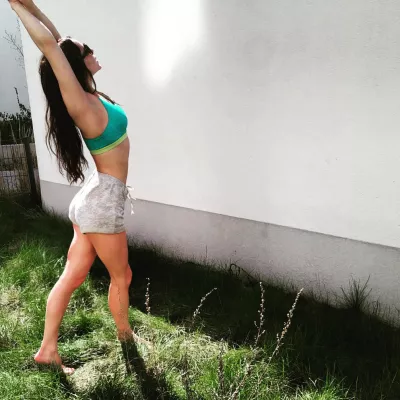What training program should you choose in pursuit of the body of your dreams?
What training program should you choose in pursuit of the body of your dreams
We live in the world of information technology, where everyone has open access to all knowledge, using only a smartphone. There are tons of resources on health, nutrition, and physical activity — yes, anything. And this is truly an amazing century of limitless knowledge.
But there is a dark side to this - the problem is that there is so much information: one teaching refutes the other, another the third, and so on to infinity. In the end, it turns out that this huge variety of knowledge takes our time and nerves, and, in the end, often turns out to be useless for our specific goals.
I would like to devote this article to what is the difference between aerobic and strength training? Does it really matter which direction to choose in pursuit of the body of your dreams?
“Everything is not what it seems” (Source: Parable of the Two Angels)Aerobic training.
For simplicity, let’s take an example of running. Running at a moderate pace burns an average of about 500 - 600 kcal / hour. Suppose you follow a reduction diet, you run at least 3-4 times a week for at least 40-45 minutes. Accordingly, the first couple of weeks you really get a huge return - the arrow on the scales will certainly begin to please the eye.
But our body is so complex, and at the same time, an amazing mechanism that it will within a very short time be sure to adapt to new conditions. It’s absolutely not important for our body that you want to lose weight to fit into an old dress of size S, or that you need to shine in a new swimsuit for the holiday season in the Seychelles. The only task is survival.
Thus, after a couple of weeks you have to increase the load in order to still get the result. You start to run not 40, but 50 minutes, then 60, then 90 at all. What is happening? Your body slows down the metabolism to help you “survive” in the new environment. Therefore, hated kilograms can easily return, if you throw or reduce running time.
Very often you can even see fitness instructors in groups, whose bodies are far from ideal - I'm not talking about the fact that they are overweight - not at all. Nevertheless, many are far from an elastic taut body. Does this seem paradoxical to you? After all, they conduct fitness classes every day, some even for several hours.
Why it happens? Aerobic training, or, as it is also called, cardio training, is primarily aimed at training the heart. If your goal is to strengthen the cardiovascular system, normalize the heart rhythm, increase the stamina of the body - then this is an amazing choice, and you are on the right track. Please note that reducing body weight in this type of load plays a side role. You burn fat, but nothing more.
But, if your goal is to build the body of your dreams, to lose weight by making the body supple and fit - your choice should fall in strength exercises.
Power training.
In strength training, the primary goal is to strengthen the muscle frame. Reducing adipose tissue plays a side role, as in aerobic training. Exercising in the gym, you burn less than about 300 kcal / hour.
But, traumatizing your muscles, your body will immediately direct all forces to restore them. Accordingly, in the next 24-36 hours, your metabolism will increase markedly, and, being in a caloric deficit from the outside, the body will have to take energy from the precious reserve of your subcutaneous fat. Ultimately, strength training will spend more kcal than an hour run, aerobics, zumba, etc. But the magic does not end there.
When working on muscles, over time, your metabolism will not only not decrease, as in the case of cardio, but also increase, because maintaining muscle mass for the body is very energy-intensive.
What conclusion can be drawn from this?
As mentioned earlier, our body is aimed at survival as much as possible. He will always strive to accumulate body fat or, in translation into our body language, energy reserves.
Last but not least, the body is interested in muscle mass. Thus, the body will get rid of it, since maintaining muscles even in a state of complete rest requires a lot of energy. At the same time, fat is a very important strategic reserve. In the absence of physical activity, even with the most correctly selected diet, water and muscles, most of all fat, will go away with weight, first of all.
To prevent this from happening, you need to put the muscles in priority, show the body that they are vital, they are needed, they are used, and they are not an unnecessary load. This explains why, observing only one diet, doing exclusively aerobic sports, the body does not acquire the desired forms.
Too much attention is paid to burning fat and too little muscle gain. For every gram of muscle lost, fat will certainly come that does not require so much energy.
Choosing a workout to get the body of your dreams, the main goal is to work out the muscles, rather than burning fat. Fat burning occurs in the kitchen, with the right diet.
